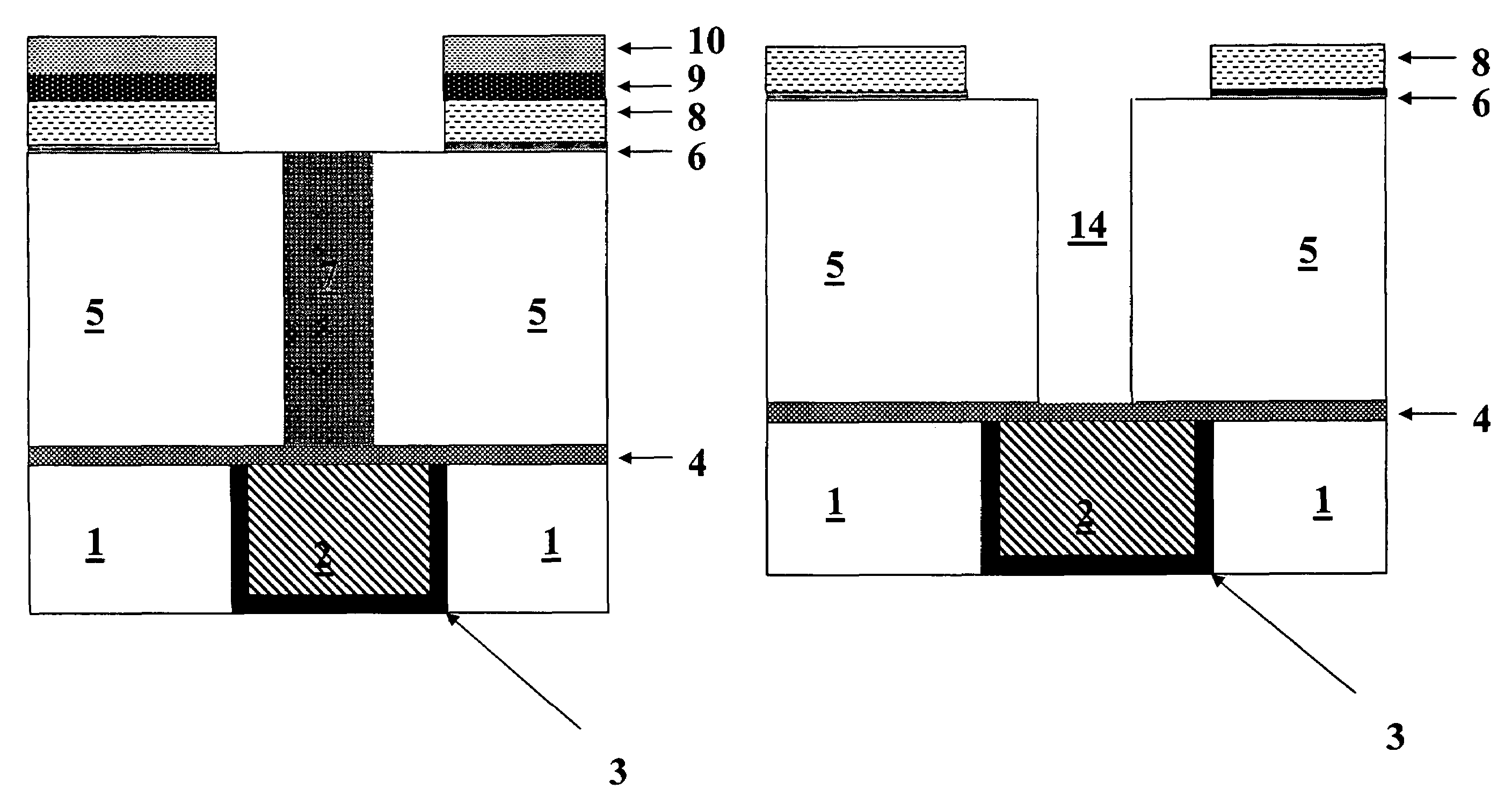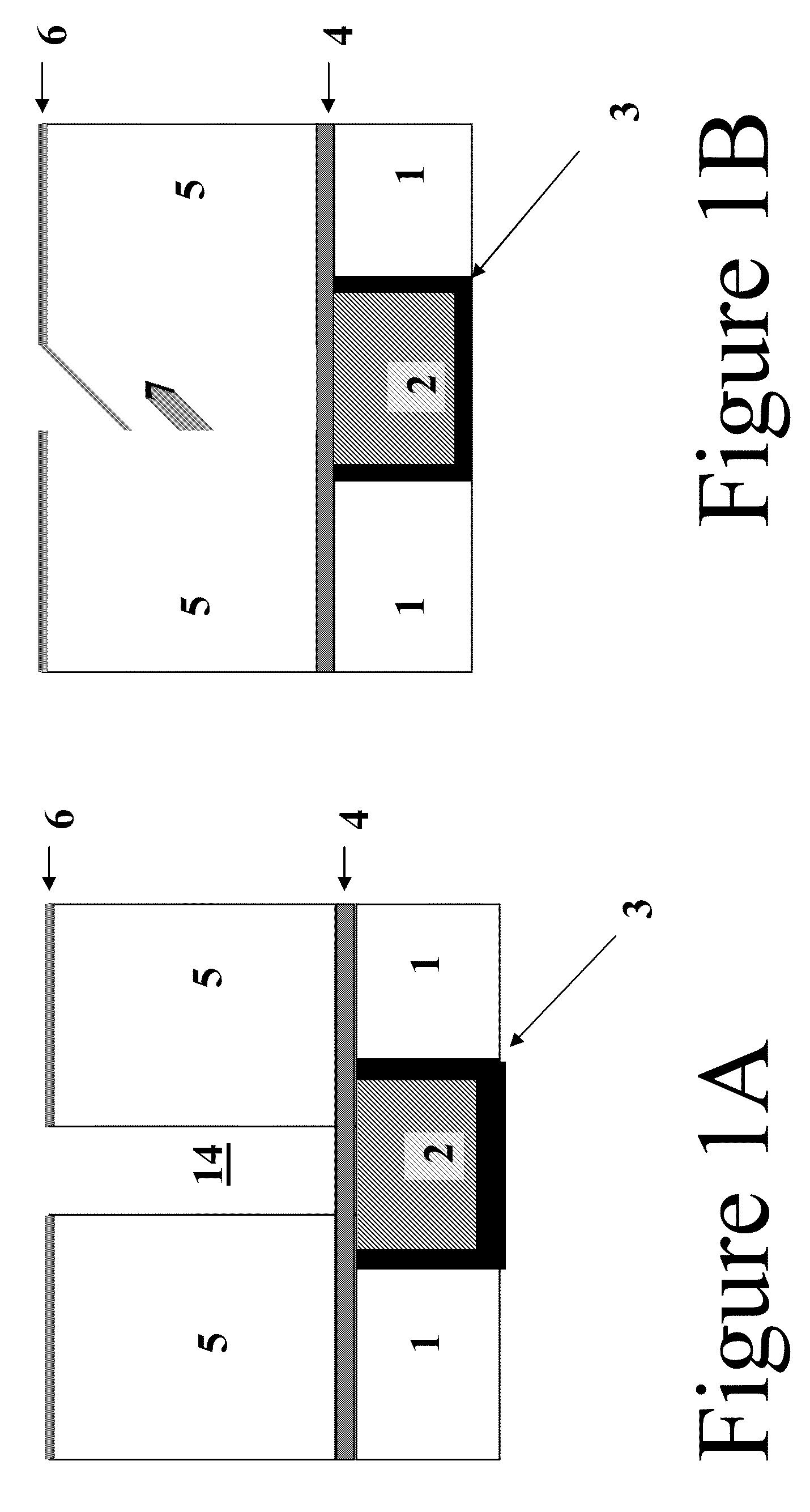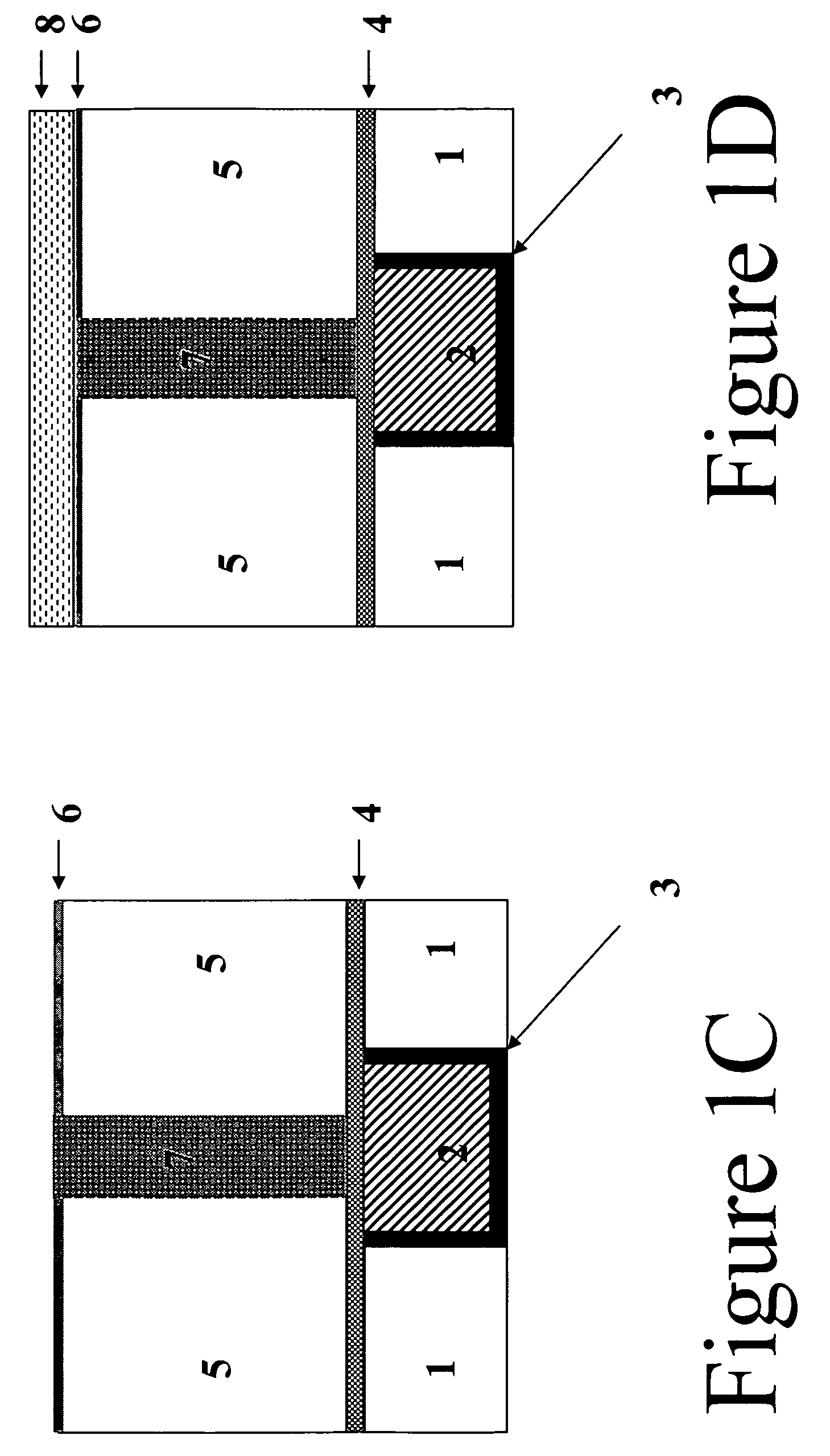Dual damascene patterning method
a patterning and damascene technology, applied in the direction of electrical equipment, semiconductor devices, semiconductor/solid-state device details, etc., can solve the problems of new problems in semiconductor processing, low-k damage, photoresist poisoning, etc., to eliminate photoresist poisoning, avoid (or at least minimize) low-k damage, and eliminate resist poisoning
- Summary
- Abstract
- Description
- Claims
- Application Information
AI Technical Summary
Benefits of technology
Problems solved by technology
Method used
Image
Examples
example
Example 1
Processing a Dual Damascene Structure on a Substrate Avoiding Resist Poisoning and Reducing Plasma Damage to the Side Walls of the Trench
[0186]The method, based on the process flow described, is illustrated in this example.
[0187]The patterning of the trench (second hole) was done with a hardmask selective etch plasma comprising C4F8 without oxygen to avoid possible side wall damage of the trench during patterning.
[0188]The resist was stripped before the patterning of the trenches.
[0189]The dual damascene stack consisted of 30 nm SiC, 340 nm SiOC (k-value˜3.0) and a 13 nm oxide cap. The via photo, with 100 nm target dimension, was exposed using a 20 nm thick BARC layer and 220 nm resist. Minimum via pitch was 200 nm.
[0190]The via holes, including the SiC bottom layer opening, were etched as follows: 10 sec. BARC opening in CF4 / O2; 15 sec. via etching (step 1) in Ar / O2 / C4F8; 20 sec. via etching (step 2) in Ar / N2 / C4F8 / CH2F2; and 10 sec. resist strip in O2 / CF4
[0191]The vias we...
PUM
 Login to View More
Login to View More Abstract
Description
Claims
Application Information
 Login to View More
Login to View More - R&D
- Intellectual Property
- Life Sciences
- Materials
- Tech Scout
- Unparalleled Data Quality
- Higher Quality Content
- 60% Fewer Hallucinations
Browse by: Latest US Patents, China's latest patents, Technical Efficacy Thesaurus, Application Domain, Technology Topic, Popular Technical Reports.
© 2025 PatSnap. All rights reserved.Legal|Privacy policy|Modern Slavery Act Transparency Statement|Sitemap|About US| Contact US: help@patsnap.com



